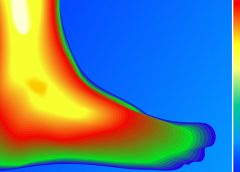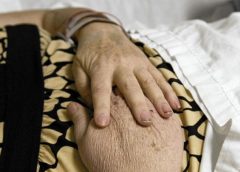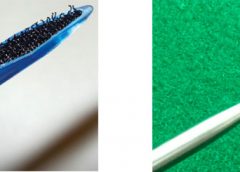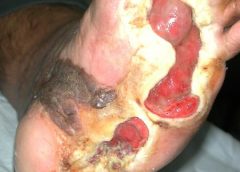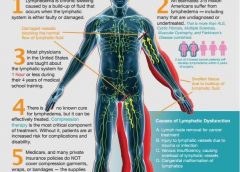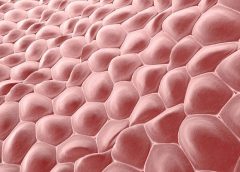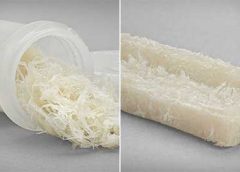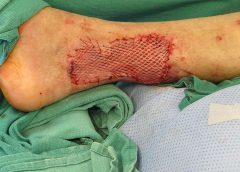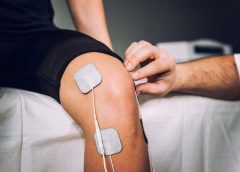A first of its kind study between RMIT University, the University of Melbourne, and Austin Health, used thermal imaging to predict the size and healing trajectory of recently developed diabetic foot ulcers.
Read MoreSearch Results for: Mit
Skin Damage Associated with Moisture and Pressure
Skin damage associated with moisture and pressure
Program Objectives
- Identify how wounds are classified according to wound depth and etiology.
- Describe the etiology of a pressure injury (PI) and incontinence-associated skin damage (IAD).
- Discuss evidence-based protocols of care of prevention and management if IAD and PIs.
- Describe the NPUAP-EPUAP Pressure Injury Classification System.
- Identify appropriate products that can be used for preventioin and treatment of IAD and PIs.
Our Speakers
 |
 |
Submit below to view the Webinar and download Slidedeck
*By downloading this (product) you are opting in to receiving information from Healthcom Media and Affiliates. Or the details, including your email address/mobile number, may be used to keep you informed about future products and services.
Read MoreWinning the battle of skin tears in an aging population
ON DEMAND webinar
Winning the battle of skin tears in an aging population
This April 25th, 2017 webinar overviews a significant challenge that healthcare providers encounter daily.
“Skin tears” may sound like a relatively minor event, but in reality, these injuries can have a significant impact on the quality of patients’ lives in the form of pain, infection, and limited mobility. The incidence of skin tears has been reported to be as high as 1.5 million annually, and with an aging population, this number is likely to go higher. In this webinar, experts will explain how nurses can use an evidence-based approach—including following practice guidelines to assess the wound and select the proper dressing—for managing skin tears and minimizing their negative effects.
Our Speakers
The skin tear challenge
Kimberly LeBlanc
MN, RN, CETN(C)
Advanced practice nurse, KDS Professional Consulting President, International Skin Tear Advisory Panel
An expert in skin tears, Kimberly will briefly set the stage by addressing the seriousness of skin tears and briefly addressing assessment such as classification.
The main focus will be on management, including goals of care, wound cleaning, wound bed preparation, and dressing selection.
Content will include information from the 2016 consensus statement on skin tears published in Advances in Skin & Wound Care.
|
Tips and techniques for managing dressings for skin tears
Shannon Cyphers
RN, BSN, WCC
Clinical Account Manager, ConvaTec, Inc.
Shannon will present wound and skin care product applications to help manage skin tears.
|
Submit below to view the Webinar and download Slidedeck
Questions or comments? Please contact [email protected]
*By downloading this (product) you are opting in to receiving information from Healthcom Media and Affiliates. Or the details, including your email address/mobile number, may be used to keep you informed about future products and services.
Read MoreHope for first drug against lymphedema
Many cancer patients, especially those who’ve undergone breast cancer treatment, experience painful, swollen limbs, a condition called lymphedema.
Now researchers say they’ve found an underlying mechanism that could eventually lead to the first drug therapy for the debilitating condition. (more…)
Read MoreCervical Biopsy more efficient, less painful via new method
Physicians evaluate new device to test for cervical cancer. Comparison of Tissue Yield Using Frictional Fabric Brush Versus Sharp Curettage For Endocervical Curettage.
Women undergoing cervical biopsies might have lower odds of repeat tests with a rotating fabric brush than a sharp instrument because the soft device may capture more cells for analysis, a recent study suggests. Furthermore, biopsies with the softer tool may be less painful, researchers say. Cervical biopsies sometimes fail to collect enough cells from the cervix to accurately test for cancer, in which case another biopsy is needed. (more…)
Read MoreGene Therapy for Non-Healing Diabetic Foot Ulcers Starts Phase III Trial
Safety and Efficacy Study of VM202 in the Treatment of Chronic Non-Healing Foot Ulcers. This study will assess the safety and efficacy of using gene therapy via intramuscular injections of the calf for patients with chronic non-healing foot ulcers.
The first patient has been dosed in a Phase III trial assessing ViroMed’s VM202, the first pivotal study of a gene therapy indicated for patients with nonhealing diabetic foot ulcers (NHU) and concomitant peripheral artery disease (PAD).
The Phase III trial (NCT02563522) is a double-blind, placebo-controlled, multicenter study designed to evaluate VM202 for safety and efficacy in 300 adults with a diabetic foot ulcer and concomitant PAD. Two hundred patients will be randomized to VM202 and the other 100 to placebo, ViroMed’s U.S. division VM BioPharma said yesterday. (more…)
Read MoreCompression Sock for Excessive Sitting or Standing
Success as an HME compression provider takes commitment, education and an understanding that there is more to compression beyond the feet.
The compression sock is an integral product to carry for any HME provider committed to using compression technology to help patients. Compression doesn’t even need to be required due a medical condition – it’s an almost universal need. Sitting or standing for excessive amounts of time can be terrible for your health, especially the feet. For example, sitting with your legs crossed beneath your chair can cause pressure that results in swollen ankles or varicose veins. And standing all day at work can cause issues from your neck all the way to your feet. (more…)
Read MoreA new way of healing wounds in the future discovered by scientists
Scientists at Ohio State University have developed a new method that has the capability of changing the body’s existing cells into new cells to promote healing. The method, called Tissue Nanotransfection (TNT), reprograms cells through a device that uses nanotechnology. The way it would work: First, doctors would apply a light electrical stimulation to the surface of the skin. They would then place a small chip about the size of a cuff link onto the site of the wound. In less than a second, this chip would deliver reprogramming factors (pre-programmed DNA or RNA) non-invasively into living skin cells via a high-intensity, focused electric field, converting them into whatever type of cells a scientist or doctor may choose. (more…)
Read MoreAlloFuse® Select CM Supports Your Patient’s Healing
AlloFuse® Select CM – clinically proven to activate and support bone formation and can be used in a variety of spinal, neurologic, and orthopedic procedures.
AlloSource, one of the nation’s largest providers of cartilage, bone, skin, soft-tissue, and cellular allografts to advance patient healing in surgical procedures and wound care, today announced the release of AlloFuse® Select CM, a premium addition to AlloSource’s AlloFuse portfolio. (more…)
Read MoreAntibiotic use in pressure injury infections
Antibiotic overuse contributes to the problems of antibiotic resistance and healthcare acquired infections, such as Clostridium difficile. Antibiotic stewardship programs improve patient outcomes, reduce antimicrobial resistance, and save money. These programs are designed to ensure patients receive the right antibiotic, at the right dose, at the right time, and for the right duration. (more…)
Read MoreBetter Skin Grafts – take only one layer
Research shows that a skin-graft harvesting system aids chronic wound recovery and reduces care costs by accelerating the healing process.
More than six million cases of chronic wounds cost $20 billion each year in the United States. Diabetic ulcers, pressure sores, surgical site wounds, and traumatic injuries to high-risk patients account for most wounds that won’t heal. (more…)
Read MoreHow to benefit from electrical stimulation for the treatment of chronic wounds
One of the most amazing things about the human body is its ability to repair itself. Lacerations, punctures, abrasions all heal with little or no care. Chronic wounds, those that persist day after day, are a small subset of wounds but they compose a troublesome minority. They include, but are not limited to, diabetic foot ulcers (DFU), venous leg ulcers (VLU), and pressure ulcers (colloquially known as bedsores). These represent the body’s failure to fix itself. (more…)
Read More
